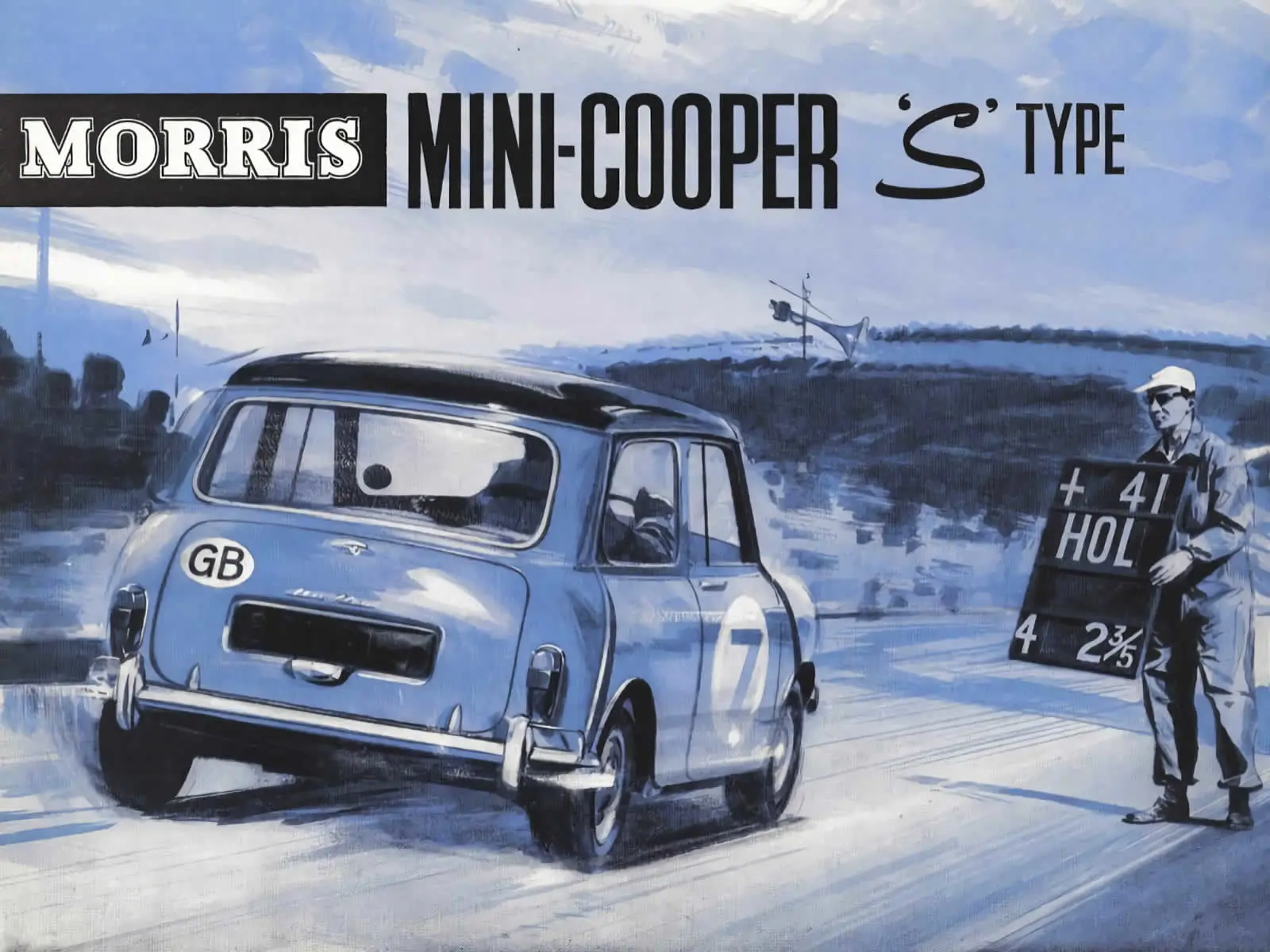THE MINI COOPER S AT 60
26 April 2023
Mythology has it that the Mini Cooper S is as emblematic of ‘The Swinging Sixties’ as images of Carnaby Street. In fact, the British Motor Corporation launched it into a world of flat hats, twin sets and club blazers at Goodwood. As with its less potent stablemates, BMC sold the Cooper S in Austin and Morris forms, claiming it was “for the enthusiast who requires something extra”.
Most readers know that the Corporation loaned a new Mini, registration YOK 250, to the Cooper Car Company Ltd. As a result, John Cooper abandoned his plans to convert the Renault Dauphine and instead focused on the new Alec Issigonis design. George Harriman, BMC’s Managing Director, was so impressed with the prototype that he agreed to build 1,000 cars for homologation purposes with Cooper’s royalty set at £2 per unit. The first examples departed Longbridge on 11 July 1961.

Meanwhile, the Cooper Car Company used a 98bhp 1100cc version of the A-Series engine for the 1962 FJ season. John saw the potential in a road version of the Mini Cooper, but the Corporation was initially worried about tooling costs. However, Cooper eventually convinced Harriman with BMC’s competition manager, Stuart Turner.
The first Cooper S Type” left the production line on 16 January 1963. Downton Engineering and Morris Engine developed the 1,071cc power plant; it needed to be under 1,100cc to comply with motor sport class regulations. The specification included 7.5-inch front disc brakes with a ‘Hydrovac’ booster. Vented wheels, a 120 mph speedometer, and the ‘S’ bonnet badge distinguished it from the standard Cooper.
The launch took place on 2 April, and the price was £695 7s 1d - £126 more than its stablemate. Seat belts cost another £5 each, and the upholstery was from the Mini Super De Luxe. Autocar found the Cooper S “a practical, safe, stimulating and extremely quick little car”, with its 70bhp engine (15bhp more than the Cooper), top speed of 91 mph and 0-60 in 13.5 seconds. Meanwhile, the chap at the Telegraph thought in August 1963, “I am not surprised that customers are clamouring for it”.
BMC initially expected sales to be limited to competition drivers, but received so many orders, especially from abroad, that they decided to put the S into volume production. It was also, as Graham Robson points out, a reason why the Mini Cooper had a limited ‘works’ competition career - from January 1962 to mid-1963 - while the development of the S was underway by the end of 1962.
On 27 June 1963, the Corporation proudly announced “BMC Win Touring Category” in the Alpine Rally, with the Rauno Aaltonen/Tony Ambrose Cooper S. BMC launched the 970S homologation special and the 1275S in March 1964. Production of the 1,071cc version ceased five months later when the brand was one of the world’s most famous sports saloons.
And the reputation of the S was established in January 1964 when the Morris Mini Cooper S, registration 33 EJB, driven by Paddy Hopkirk with Henry Liddon as his co-driver – won the Monte Carlo Rally.
By that time, thousands of owners were already, to quote one BMC official, enjoying “a compact, speedy, family saloon, ideally suited to rallying, but with further tuning, it is expected to have great potential for saloon car racing”.
